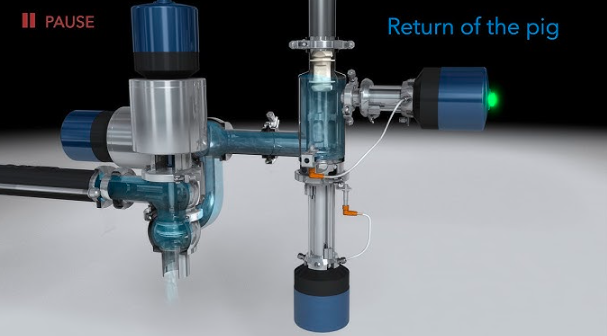Double Pig System: Enhancing Pipeline Efficiency and Integrity

The double pig system is a sophisticated tool used in pipeline operations to improve cleaning, inspection, and maintenance processes. This article delves into the functionalities, benefits, applications, and considerations associated with the double pig system, highlighting its role in enhancing pipeline efficiency and integrity.
Introduction to the Double Pig System
The double pig system is an advanced technology designed to accommodate two pigs within a single operational cycle in pipelines. Pigs, or pipeline inspection gauges, are instrumental in cleaning debris, inspecting pipeline walls for defects, and optimizing flow conditions. By integrating two pigs into the system, industries can enhance operational efficiency, reduce downtime, and maintain pipeline integrity effectively.
Components and Configuration
- Cleaning Pigs:
- One of the key components of the double pig system is the cleaning pig. Equipped with brushes or scrapers, cleaning pigs remove debris, scale, and deposits from the inner walls of the pipeline.
- This process improves flow efficiency, prevents corrosion, and ensures the cleanliness of the pipeline.
- Inspection Pigs:
- The second component is the inspection pig, which incorporates advanced technologies such as magnetic flux leakage (MFL), ultrasonic testing, or caliper tools.
- Inspection pigs assess pipeline integrity by detecting defects, measuring wall thickness, and identifying potential areas of concern such as corrosion or cracks.
Read also: The Role of Commercial Cleaning in Facility Management
Operational Workflow
- Launching and Propulsion:
- The double pig system begins with the launching of two pigs into the pipeline through a launcher. The launcher seals the pipeline and safely inserts the pigs into the flow stream.
- Pigs are propelled through the pipeline using product flow or external means such as compressed air or hydraulic pressure.
- Simultaneous Cleaning and Inspection:
- Once launched, the cleaning pig leads the operation by scraping and removing debris from the pipeline walls.
- The inspection pig follows closely behind, collecting data on pipeline condition and transmitting it to monitoring systems or operators in real-time.
- Data Collection and Analysis:
- Sensors and measurement devices on the inspection pig capture data related to wall thickness, defects, and anomalies as the pigs traverse the pipeline.
- This data is analyzed to assess pipeline condition, identify maintenance needs, and inform decision-making regarding operational improvements.
- Retrieval and Maintenance:
- At the end of the pipeline, pigs enter a receiver where they are safely retrieved. Debris removed by the cleaning pig is collected in traps to prevent re-entry into the pipeline.
- Inspection data is reviewed and analyzed to generate reports, ensuring compliance with regulatory standards and optimizing pipeline performance.
Benefits of the Double Pig System
- Efficient Maintenance: Simultaneous cleaning and inspection operations reduce downtime and optimize pipeline maintenance schedules.
- Enhanced Safety: Regular inspections and cleaning mitigate the risk of leaks, ensuring safe operation and regulatory compliance.
- Cost Savings: Preventive maintenance minimizes repair costs and extends the lifespan of pipeline assets, maximizing return on investment.
- Operational Efficiency: By integrating multiple tasks into a single operation, the double pig system improves workflow and operational efficiency.
Considerations for Implementation
- Pipeline Compatibility: Ensure the double pig system aligns with pipeline dimensions, materials, and operational conditions for optimal performance.
- Training and Maintenance: Proper training of personnel in double pig system operations and maintenance is essential for safe and effective use.
- Technological Advancements: Stay updated on pigging technology advancements to leverage new capabilities and enhance operational efficiency.
Conclusion
The double pig system working principle a critical role in enhancing pipeline efficiency and integrity by integrating simultaneous cleaning and inspection capabilities. Industries benefit from reduced downtime, improved maintenance practices, and enhanced operational safety. As technology continues to advance, the double pig system remains a valuable tool for optimizing pipeline performance and sustainability across various industrial applications.





